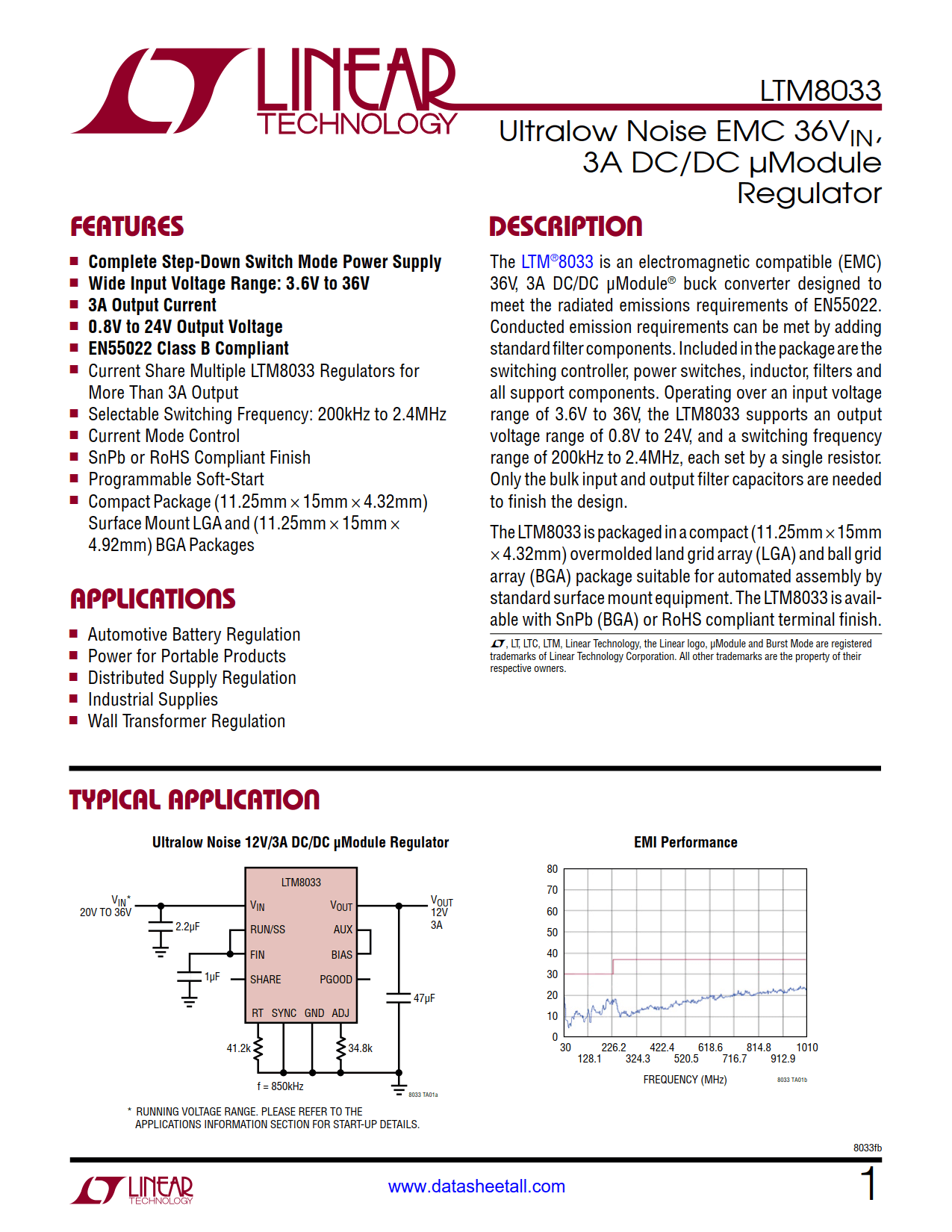
LTM8033 Datasheet
Ultralow Noise EMC 36VIN, 3A DC/DC μModule Regulator

Ultralow Noise EMC 36VIN, 3A DC/DC μModule Regulator
| Part No. | In Stock | Price | Packaging | SPQ | Marking | MSL | Pins | Temp Range | Package Description |
The LTM8033 is an electromagnetic compatible (EMC) 36V, 3A DC/DC μModule® (power module) buck converter designed to meet the radiated emissions requirements of EN55022. Conducted emission requirements can be met by adding standard filter components. Included in the package are the switching controller, power switches, inductor, filters and all support components. Operating over an input voltage range of 3.6V to 36V, the LTM8033 supports an output voltage range of 0.8V to 24V, and a switching frequency range of 200kHz to 2.4MHz, each set by a single resistor. Only the bulk input and output filter capacitors are needed to finish the design.
The LTM8033 is packaged in a compact (11.25mm × 15mm × 4.32mm) overmolded land grid array (LGA) and ball grid array (BGA) package suitable for automated assembly by standard surface mount equipment. The LTM8033 is available with SnPb (BGA) or RoHS compliant terminal finish.